Autumn 2023 Styles, Colors, and Fabrics
10 trends to inspire your fall fashion sewing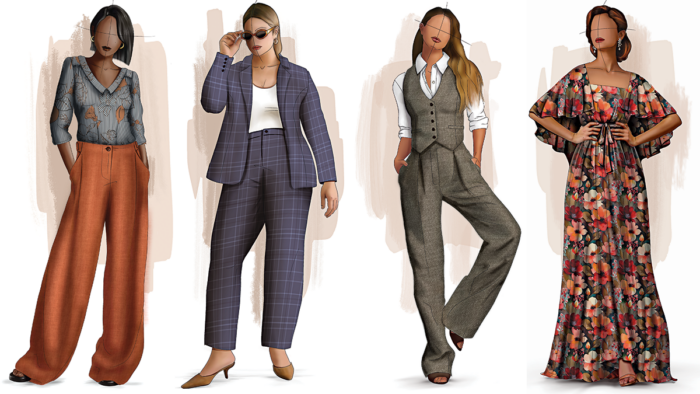
One of the biggest fashion trends this fall is to appear as if you’re not following trends at all. There’s a return to the classics, to heirloom-caliber garments made from high-quality fabrics. The “quiet luxury” movement is everywhere, calling for subtlety and sophistication and an understated approach to fashion. With advice from experts in fashion sewing, I’ll share some perspectives on creating your own trends for fall/winter, and offer ideas for choosing textiles and patterns that are stylish, versatile, and responsive to environmental issues.
Heather Lewenza (a.k.a Heather Lou), owner and designer at Closet Core Patterns (ClosetCorePatterns.com), describes the current non-trend trend as “a rejection of the overt streetwear logomania of the last few years.” Carlos Correa, designer at Vogue Patterns (Simplicity.com), says consumers are reacting to the overdesigned, influencer-driven looks of recent years by choosing a more subdued and toned-down approach to fashion, as well as more sensual and feminine designs. “A lot of folks are looking to the past for inspiration,” he adds, noting that nostalgia, itself, is trending. We’re also, as a society, slowly emerging into a world that is less dominated by a pandemic; going back to the office and our social lives; attending special events—but with a focus on more meaningful and conscious dressing. Pattern company owners and designers spoke about how they plan for a season, what they see trending, and their thoughts on style and expression in general.
From trends to patterns
Obviously, running a pattern company means you pay some attention to what is happening on the runway. Designers interpret these trends in patterns that are classic, timeless, and fresh while allowing for individual creativity on the part of the maker.
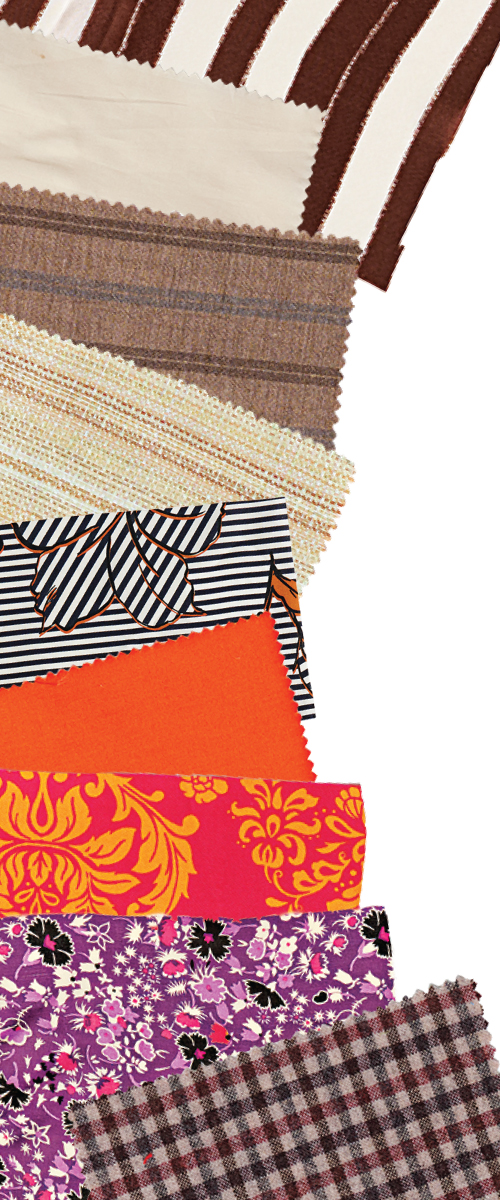
Heather Lou gets inspiration from traveling to big cities to see what people on the street are wearing and what buyers are stocking in the stores. “I’m much more interested in seeing how stylish people in real life interpret fashion,” she says. Liesl Gibson of Liesl & Co. (LieslAndCo.com) aims to create patterns that are contemporary takes on classic clothing. “I’m interested in the long story, in what you want to wear today as well as in two years” (or more). Jenny Rushmore’s Cashmerette Patterns (Cashmerette.com) focuses on “classic, timeless styles designed for a curvy figure.” While she often uses trending colors or fabrics for her photo shoot samples, for the most part, “getting a wonderful fit in a button-down, blazer, dress, or pants is a much higher priority for our customers than the very latest runway styles,” says Rushmore.
Mindful fashion choices
This is exactly what current fashion trends embrace: well-made clothing that stands the test of time. Natalie Tincher, owner of BU Style (BUStyle.com), provides wardrobe styling services to individuals and companies. One of the major trends she’s especially pleased to see on the runway is a return to “minimalistic and wearable fashion.” She says, “I wish this super-fast, fad, microtrend cycle of fashion would stop. There is too much being produced too quickly.” This cycle hurts workers, the environment, and the independent designers who thoughtfully produce quality pieces. “And,” she explains, “it’s damaging for consumers, who often feel like they have to constantly chase a trend but can never keep up.”
As a maker, you are already ahead in the responsible clothing game just by the fact that you are sewing your own garments. Choosing quality textiles that are made with environmental concerns in mind elevates them. I love the idea of building heirloom-quality garments that can be passed down—and it seems that the trend-centered world of consumer fashion is starting to appreciate it, too. When you create a sewn wardrobe, with sustainability and longevity in mind, you’re leading this industry-wide shift. Plus, you’re gifting yourself with garments that are good for the soul and good for the environment.
Bold hues, earthy colors
Neutral and earthy colors like brown, orange, and ocher continue to be popular. Shades of green seem to be everywhere these days. The runway also featured bold colors, especially vibrant pops of red. Pantone’s fall and winter 2023/2024 colors include bright magenta, rich red, and vibrant orange and yellow as well as minty greens. In place of black, neutrals range from a tawny beige through deep brown to dark blue.
Textiles with sophistication
Thoughtfully chosen fabrics are key this season. It’s not just about color, fiber, and weight, but also quality and provenance. Selecting wisely ensures long-lasting, elegant garments.
Consumers want to know where their fabrics come from. They’ve become more aware of how non-earth-friendly many textile processes are. Heather Lou, who also runs Core Fabrics (CoreFabricStore.com, a sister company of Closet Core Patterns), says their online shop receives tons of requests for recycled fibers, organic cotton, biodegradable fibers like linen, as well as eco-certified textiles.
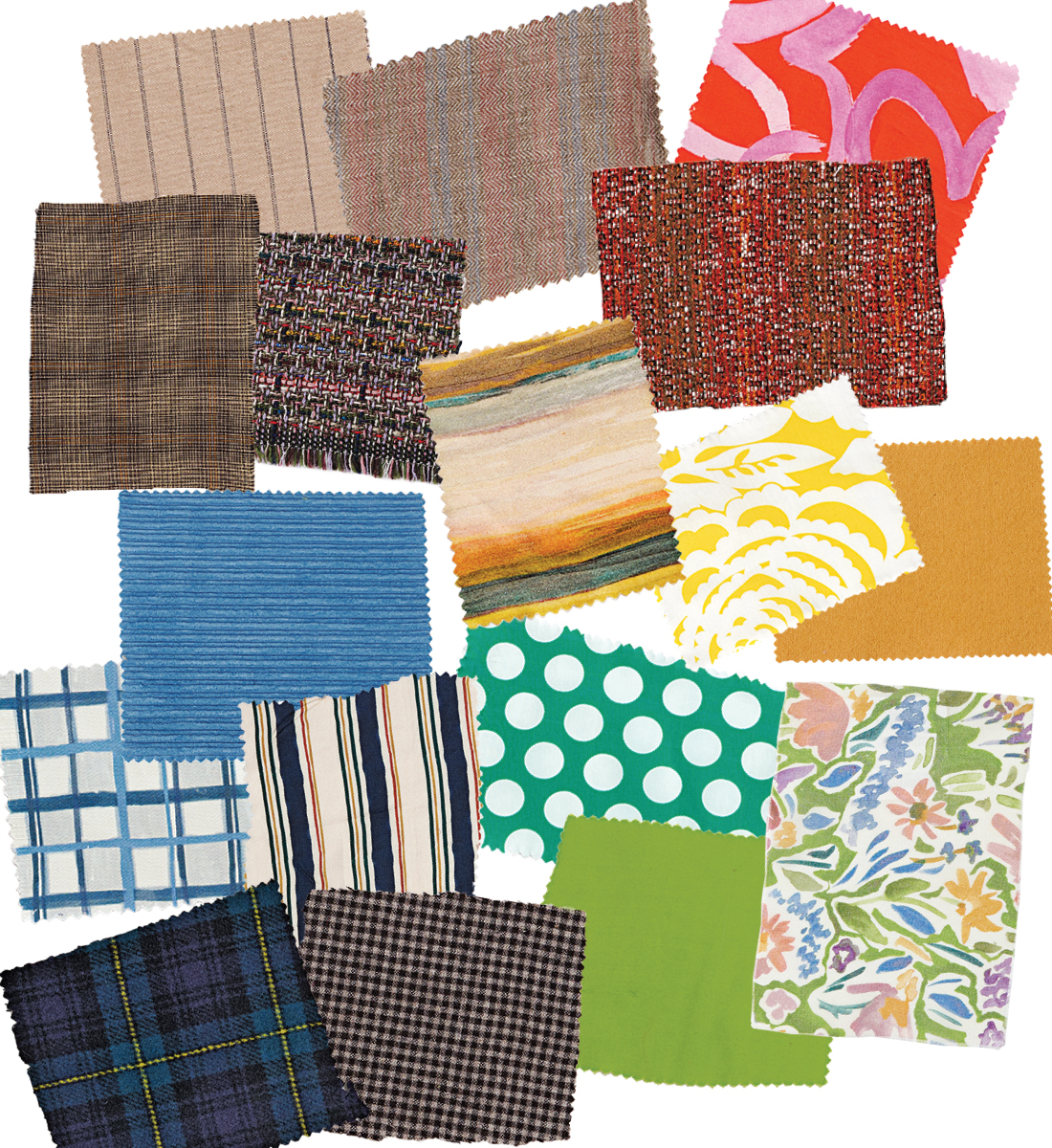
“I see fashion getting more sophisticated with a focus on quality materials and timeless pieces like beautiful trousers, tailored blazers, and classic button-down shirts in fine fabrics,” she says.
Muted tweeds, twills, houndstooth, plaids, and tartans are excellent choices for tailored looks. Don’t be afraid to mix textures, either. It adds the right amount of personal flair to your look.
Monochromatic outfits, which fit well into the “quiet luxury” aesthetic, are also trending.
“A great way to add interest is to add texture to at least one of the pieces,” says Liesl Gibson. “I’m a big believer in neutrals and building a wardrobe of pieces that work together in multiple ways and give you lots of options with minimal items. And I’m always interested in those pieces that you wear for years because they become wardrobe essentials for you.”
Sustainability with Style Sustainablefabrics and eco-fashion continue to grow in popularity, especially when it comes to makers, sewers, and tailors. Even if you’re a person who likes to stay on top of trends, you can still do this in an environmentally friendly way. Natalie Tincher, for instance, uses her clients’ personalities and lifestyles to help determine how to incorporate a specific trend into their existing wardrobe. The wardrobe stylist creates strategic shopping lists with budgets for every season. “By doing thoughtful seasonal updates,” she says, “your style and wardrobe evolve with you versus you needing a huge overhaul after a number of years.” That is a decidedly nonsustainable practice. Most anywhere you shop for fabric these days will have options that are deemed earth-friendly, meaning they have a reduced carbon, energy, and pollution impact in comparison to standard fabric production methods. They are often produced from crops that do not use pesticides or chemicals in the growing process. Fabrics made from renewable sources such as bamboo and wood are also considered eco-friendly. |
Clothes with Comfort in Mind
We aren’t likely to give up our athleisure for good. However, there is a definite trend back to real clothes with an emphasis on comfort, such as wide-legged trousers with some adjustability in waistband fit, and simple cotton or silk blouses.
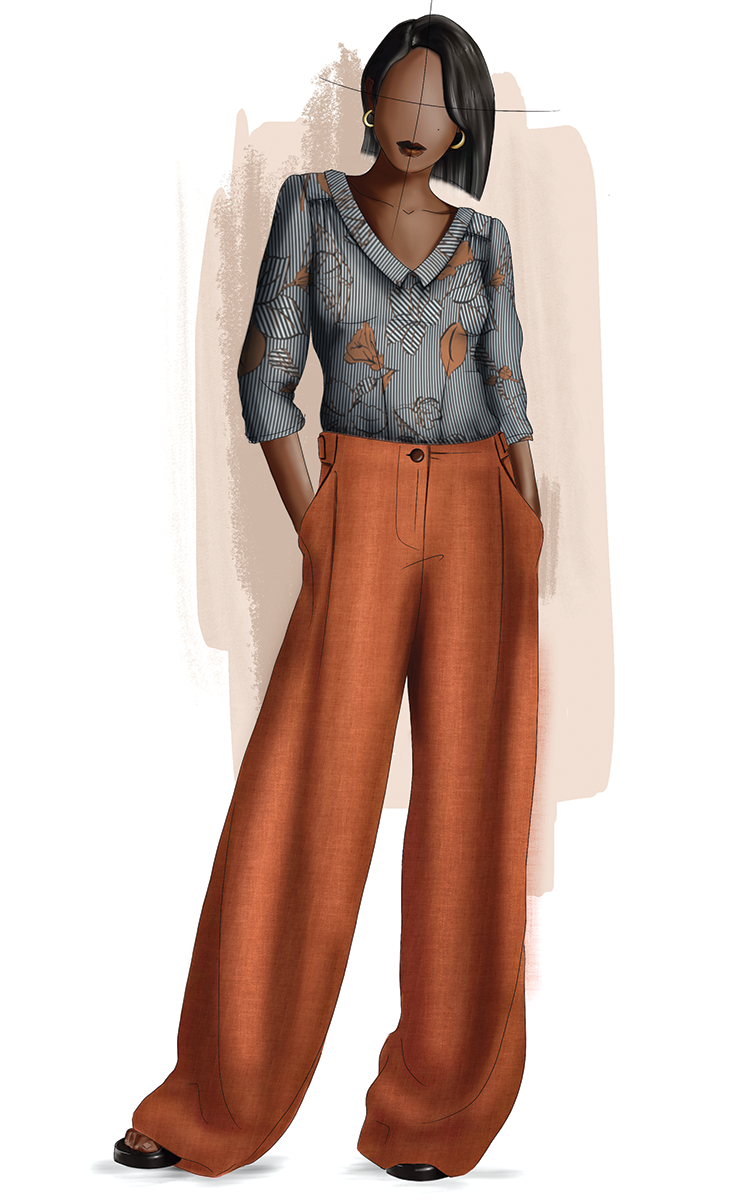
Wide-legged trousers
As Heather Lou points out, “Trousers are having a major moment.” But they’re not the form-fitting, high-waisted pants that dominated pre-pandemic life. Skinny jeans seem to finally be on their way out. The trousers that are trending have a looser, relaxed fit and often lack a structured waistband. These styles work well in midweight cotton denim or twill for slightly structured look, or Tencel twill or wool crepe for a silhouette with more drape and flow.
Patterns to try (see all here):
- Cannes Wide-Legged Trousers from Liesl & Co.: billowy legs and a sash make these easy to dress up or down
- Glebe Pants from Muna and Broad: pull-on pants with fully or partial elasticized waistband options; for sizes up to 74.5-inch hips
- McKenzie Woven Pant from Style Arc: flat-front with a side zipper closure; fits up to 61-inch hips
- Mitchell Trousers from Closet Core Patterns: hidden waistband, deep front pockets enclosed in a pleat, and adjustable waist straps; fits up to size 32
- Sammi Woven Pant from Style Arc: fly-front with contoured waistband; fits up to 61-inch hips
Cotton and silk blouses
For a relaxed, sophisticated look, pair your wide-legged trousers with an understated and classic blouse—something with subtle fitting via side-back and side-front darts. To add interest, choose a pattern with a fun neckline or sleeve detail. Opt for the comfort of natural fibers such as cotton and silk.
Patterns to try (see all here):
- Airelle Blouse from Deer and Doe: features a scooped neckline, Chelsea collar, and shoulder yoke, with two sleeve lengths
- Cotton Blouse 113 from Burda Style 08/22: pullover blouse with V-neck, shoulder yoke, and neck tie
- Flannel Blouse 121 from Burda Style 09/22: front-button blouse with gathered sleeve caps and ruffles at the cuffs
- Patina Blouse from Friday Pattern Co.: V-neck, button-front blouse with pointed collar, gathered sleeve caps, back yoke; in sizes up to 60-inch bust
- Silk Blouse 118 from Burda Style 04/23: pullover blouse with shoulder button placket, twisted collar detail, and reverse sleeve cuffs
Timeless Suiting in Quality Materials
Tailoring and suiting are back. People are interested in classic pieces that hold up well to wear and trends. Examples include a well-made blazer or suit, a classic button-down shirt, and straight-legged pants. Look for ensemble patterns, or create your own looks with separates. For suiting fabrics, choose twills, houndstooth, and plaids in earthy tones with a small pop of color, such as a plaid with one line of red or blue incorporated in the print.
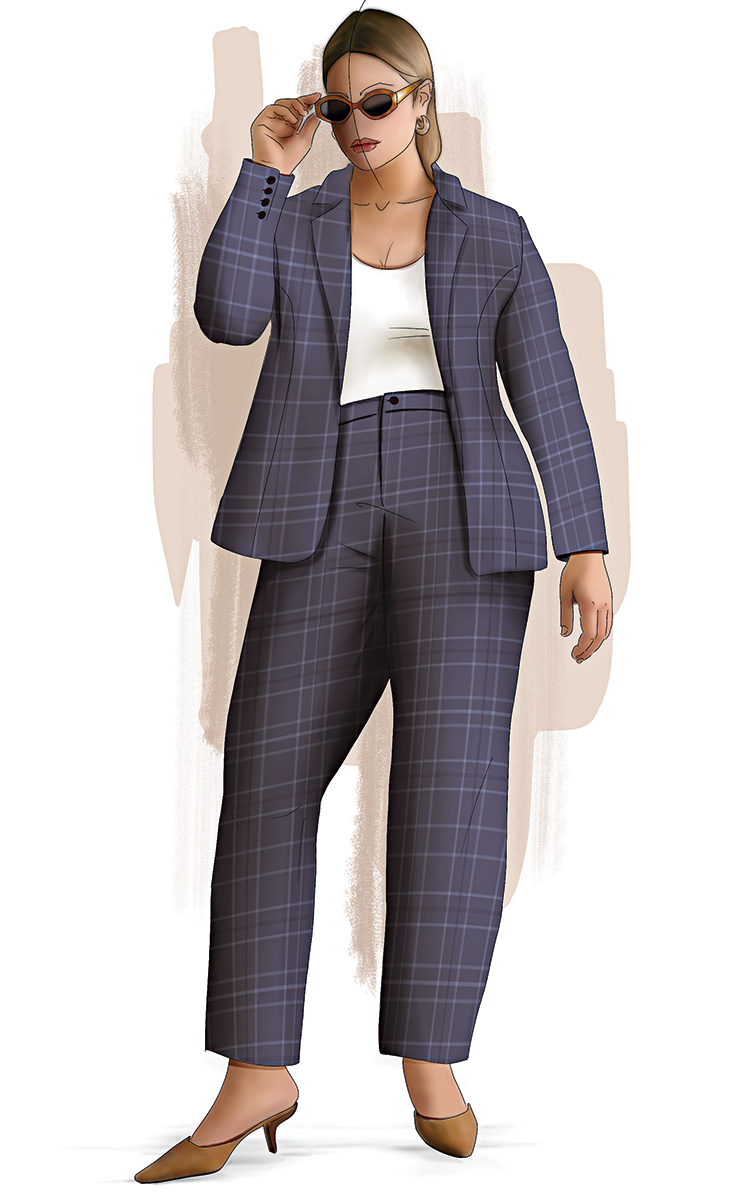
Blazers
Whether for the office or to elevate a casual outfit, a tailored blazer can work in almost any wardrobe. A classic, notched collar, fully lined, one-button jacket will never go out of style. If you’ve never tried tailoring before, the Jasika Blazer from Closet Core is an excellent pattern to start with. The instructions include modernized tailoring techniques with minimal hand sewing and fusible interfacings.
Invest time in fitting a muslin test garment, so your blazer becomes a favorite piece you’ll reach for regularly.
Patterns to try (see all here):
- Auburn Blazer from Cashmerette: one-button style shaped with princess seams, designed for curves and full busts; up to 62-inch bust
- Janet Jacket from Style Arc: sleek, princess-seamed jacket with a funnel neckline; up to bust size 58-1/4 inches
- Jasika Blazer from Closet Core Patterns: notched-collar style; online sewing class available
- Sara Jacket from Style Arc: classic notched-collar blazer with flap welt pockets; up to bust size 58-1/4 inches
- Vogue 1714: jacket with asymmetrical, moto-style closure and flared peplum
- Vogue 1927: double-breasted jacket with peak lapels and large patch pockets
Straight-legged pants
Straight-leg trousers, neither tightly tapered nor wide, complement a tailored blazer of almost any length or silhouette.
Patterns to try (see all here):
- Halsey Trousers from Viki Sews: single-pleat trousers with front slash pockets and back welt pocket
- Hollywood Trousers from Liesl & Co.: streamlined trousers with side-seam pockets and menswear-style fly shield and pocket stays
- Meriam Trousers from Cashmerette: for sizes up to 32, with a “flex” waistband option for comfort
- Sorcha Classic Slim Trousers from J Stern Designs: narrow straight leg, choice of straight or contoured waistband; for hips up to 58 inches
Suits
The benefit of selecting an ensemble pattern is that the proportions are designed to work together. There are often additional pieces included, such as tops and skirts, to complete a coordinated wardrobe.
Patterns to try (see all here):
- Butterick 6915: asymmetrical jacket with peplum; slim and wider pants
- McCall’s 7876: jacket and pants, both in two lengths
- New Look 6035: blazer, trousers, miniskirt, and top
- Simplicity 9714: blazer, pants, and shorts ensemble
- Vogue 1741: an ensemble pattern with a funnel-neck jacket with notched detail, and relaxed, pleated trousers
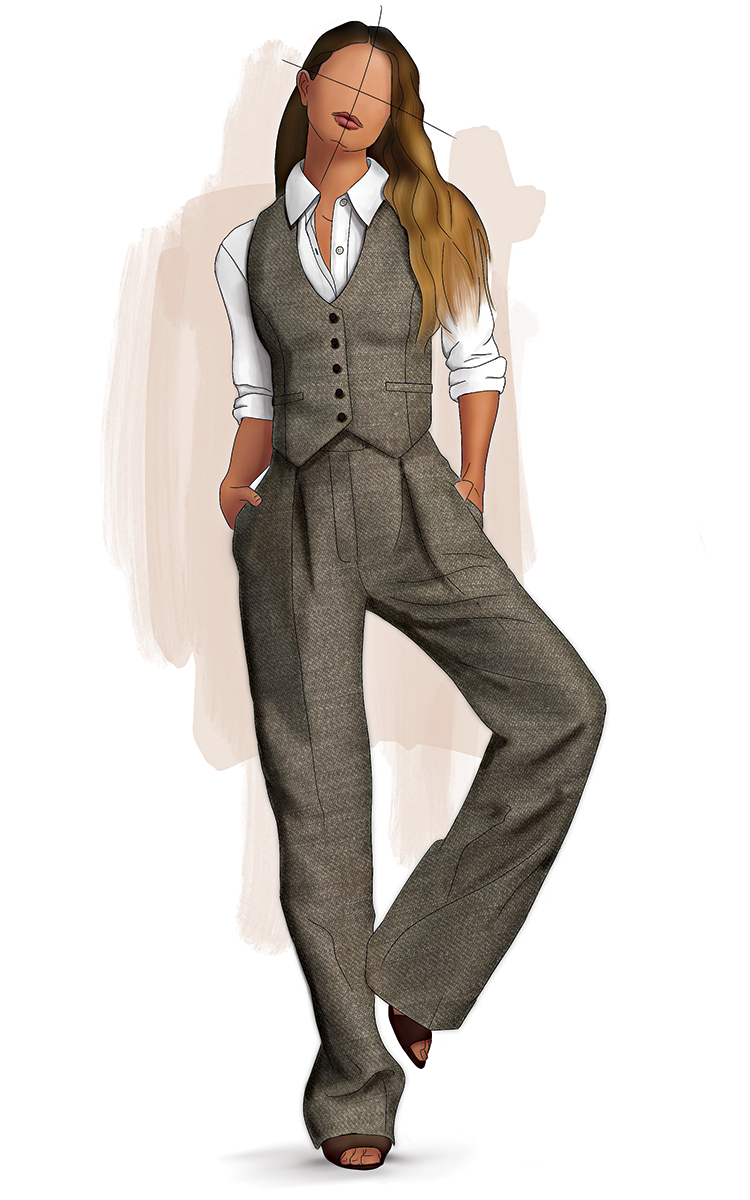
Vests
I’m big fan of tailored, lined vests, whether worn under a blazer or on their own with a shirt or blouse. A good vest is a versatile piece that can be styled with a variety of outfits.
Patterns to try (see all here):
- Joy Woven Vest from Style Arc: panel-seamed design with faux-welt pockets; up to 58-inch bust
- Simplicity 9689: vest with front belt; sized up to 60-inch bust
- Veronica Vest from Just Patterns: V-neck vest shaped with vertical darts; adjustable back tie belt; up to 57-1/2-inch bust
- 222 Vintage Vests from Folkwear: three Victorian-inspired waistcoat styles
Shirts
A traditional button-front shirt with a collar pairs well with vests and blazers. This is a great place to splurge on luxe fabrics, such as silk charmeuse or crepe, or fine cotton shirtings.
Patterns to try (see all here):
- Classic Shirt from Liesl & Co.: full of details taken from a man’s dress shirt, but shaped with bust darts
- Harrison Shirt from Cashmerette: double princess seams in front ensure a smooth, shapely fit over the bust; up to 62-inch bust
Quiet Luxury
Elevated basics are subtle and sophisticated; they emanate a comfortable grace that says, “I know who I am and I don’t need to prove anything to anyone.”
The garments are simple, but they encompass the “if you know, you know” idea of luxury and refined taste. Faux leather, maximalism for minimalism, and double denim can fall into this realm. Effortless and pulled together, these looks project a low-key confidence.

Relaxed ensembles
You can start with patterns and bundles designed to work as full outfits.
Patterns to try (see all here):
- Victor and Vera bundle from Style Arc: a pullover blouse with a wrap front and V-neck, and tapered
pants with big patch pockets; both pieces up to size 30 - Vogue 1642: loose-fitting, zip-collar top over slouchy wide-legged pants
- Vogue 1929: knit top or dress with draped shoulder detail; knit pants
Separates to pair
Alternatively, create your own subtle luxury ensembles.
Patterns to try (see all here):
- Box Box top from Merchant & Mills: Ultrasimple pleat-front top to make in light- to midweight wovens
- Geneva V-neck Blouse from Liesl & Co: button-front blouse with back pleat; two sleeve options
- McCall’s 7813: full wrap skirt with hemline variations
- Tarawi Shirt from Muna and Broad: Button-front shirt with collar and pocket options, for bust sizes up to 66 inches
- Willandra Pants from Muna and Broad: tapered pants with a diagonal side seam, partially elasticized waistband, and pockets; for hips up to 71-1/2 inches
- Yanaka Jacket from Liesl & Co.: cropped jacket with cut-on sleeve
Nostalgic Dresses
Look back a few decades for dress ideas: The fullness of the 1950s and flow of 1970s designs are back in fashion.
Dresses with full skirts in longer lengths are popular this fall. People are moving away from tight pencil skirts and restrictive, body-conscious styles. Instead, everything is gathered and breezy, sensual and flowing; some might even call it romantic. Echoes of 1950s’ ample skirts and fitted bodices with belts are present in many of these patterns. In fabrications from classic wools to silks, these styles offer an opportunity to lean into a feminine silhouette. Fluid evening dresses with a 1970s vibe can be worn loose and caftan-like, or belted to fine-tune the shape.
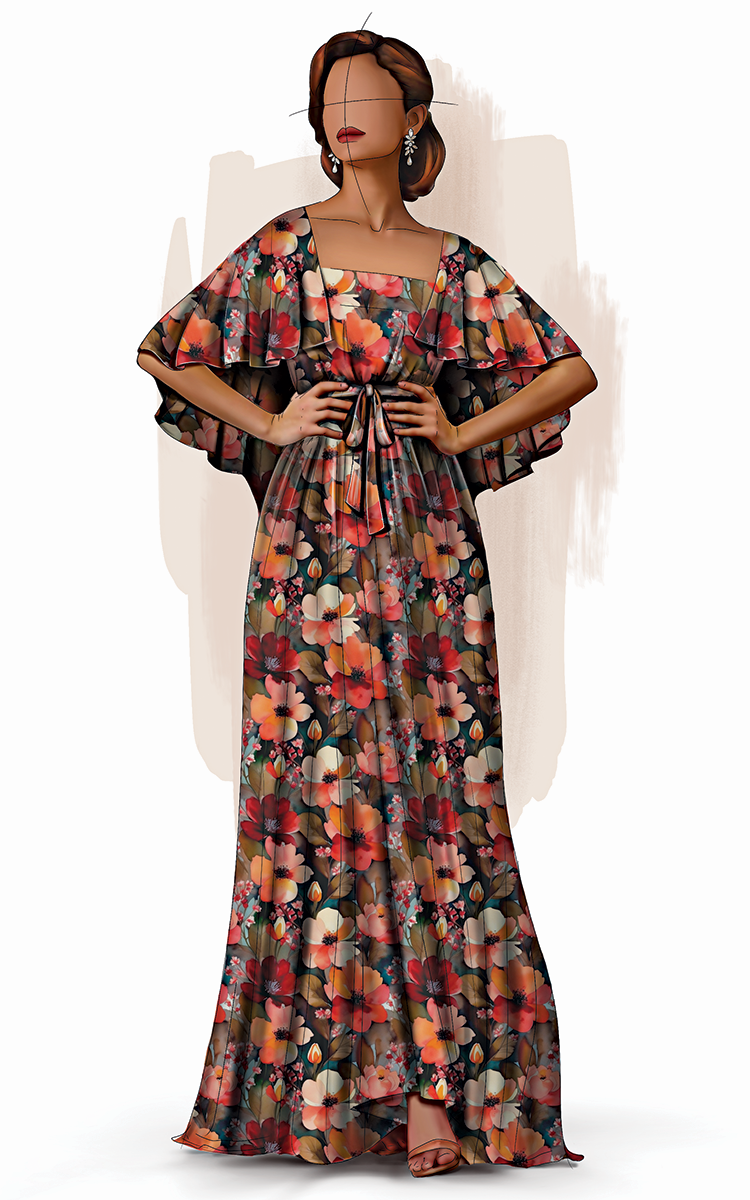
Patterns to try (see all here):
- Alix Dress from By Hand London: 1970s-inspired with inset midriff band, waist ties, and full skirt
- Magnolia Dress from Deer and Doe: maxidress with surplice bodice, tie sash, and full skirt in two lengths
- McCall’s 7433: 1940 inverted notch-collar dress with pleated skirt and belt
- Upton Dress & Skirt Mix and Match Pack from Cashmerette: A fit-and-flare dress for bust sizes up to 62 inches; many options for bodice, skirt, and sleeve elements
- Vogue 1312: Lynn Mizono dress with full, wing-shaped panels in the skirt
- Vogue 1721: Guy Laroche dress with funnel collar and full, gathered skirt, intended for knits
- Vogue 1947: A vintage 1970s evening dress with attached bias cape and tie belt
- Vogue 9000: Button-up shirt dress with full, gored skirt and short, cut-on sleeves
- Vogue 9105: 1954 design with asymmetrical front opening, full skirt, and short, cut-on sleeves
Special Occasion Dresses
Formalwear no longer has a clear-cut definition for most of us, and these patterns offer plenty of room for personal expression when it’s time to dress up.
Now that many of us are again attending weddings and other events, there will likely be opportunities for special-occasion outfits this fall.
“People are excited to make and wear beautiful statement pieces again,” says Heather Lou.
Many of the patterns listed in this article can be interpreted as special occasion outfits. Suit designs are ideal for sewing tuxedo-style ensembles; select satin for the lapel facing and pocket details.
A flowing skirt paired with Liesl & Co.’s Yanaka Jacket would also make a stunning outfit, especially in a satin brocade. Of course, any of the 1970s full-length dresses is sure to be a showstopper. Think about using a silk georgette print or a deep red silk charmeuse.
An heirloom garment begins with a quality fabric, and is worth the investment. These fashions are decidedly not disposable.
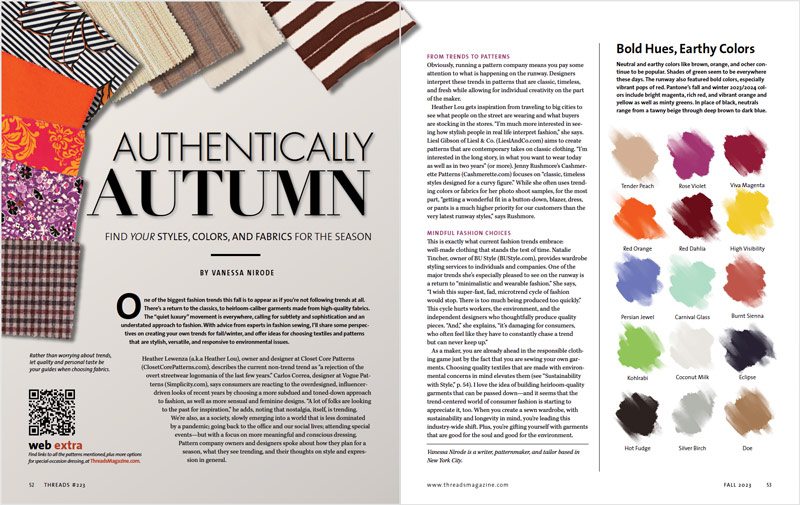
Vanessa Nirode is a writer, patternmaker, and tailor based in New York City.
Photos, except where noted: Mike Yamin. Illustrations: Steven Fleck.
Color samples: courtesy of Pantone Color Institute.
View PDF



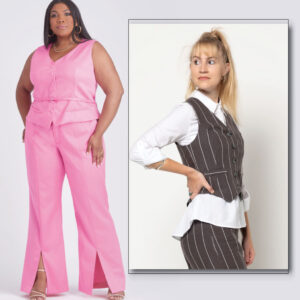





























Log in or create an account to post a comment.
Sign up Log in